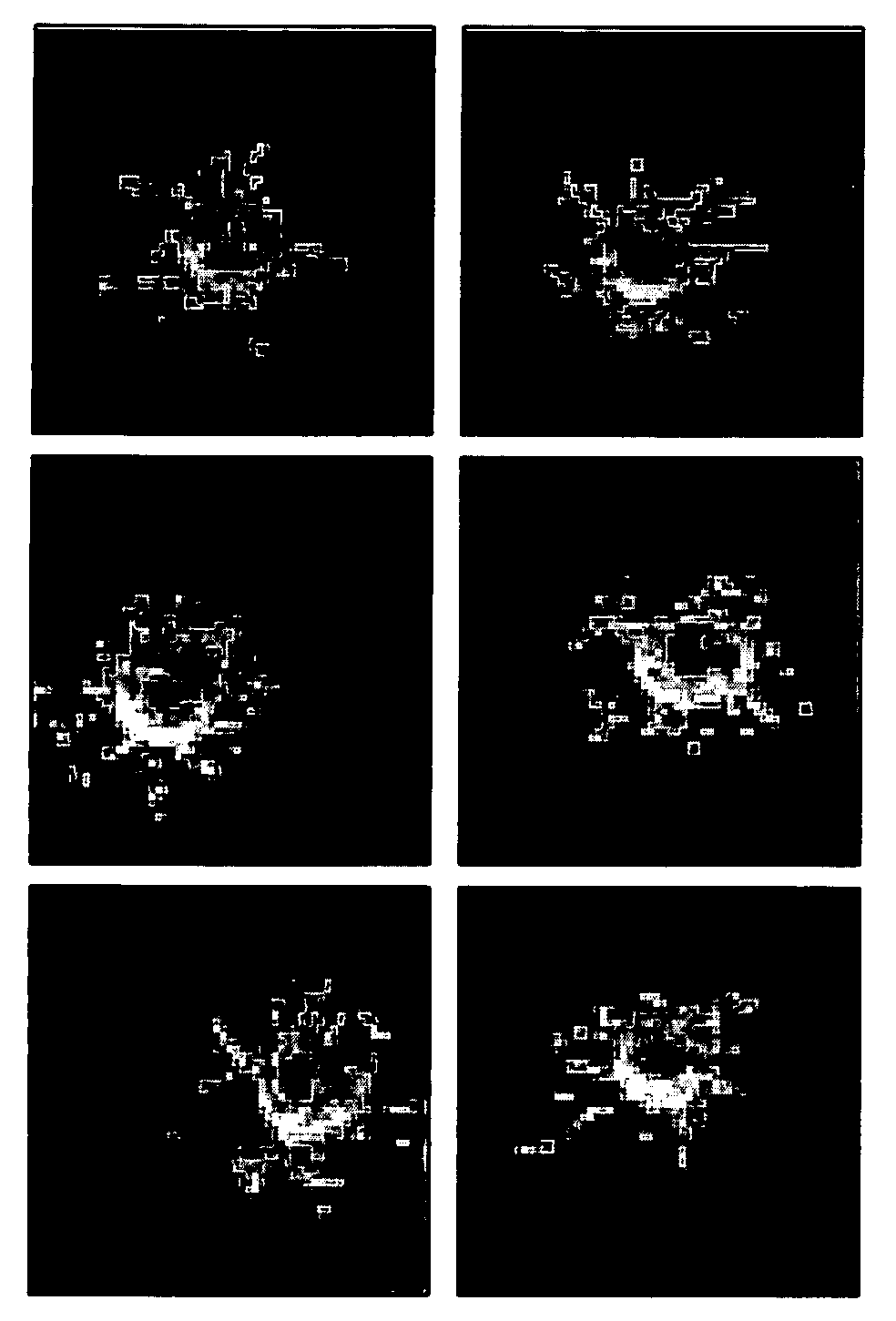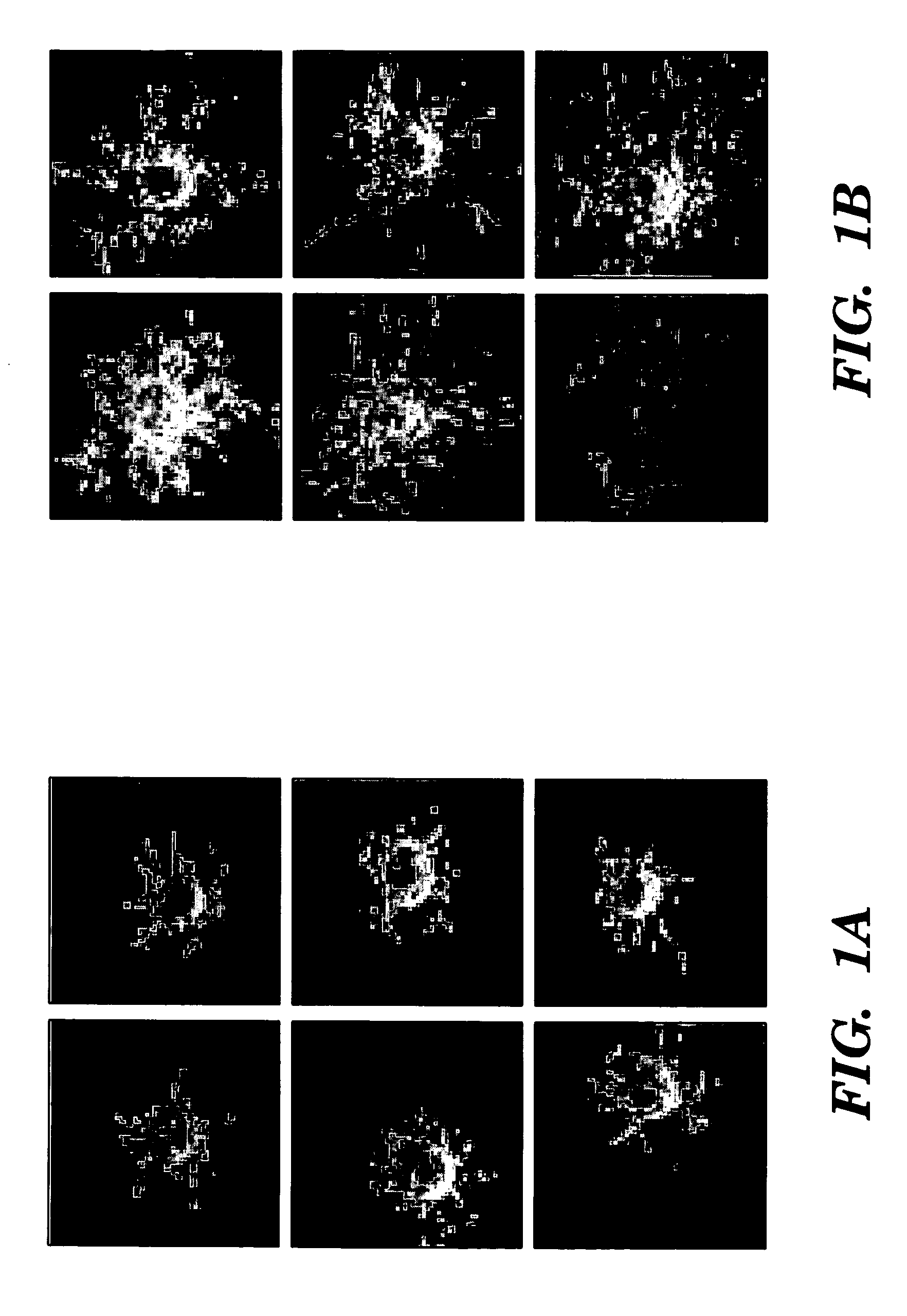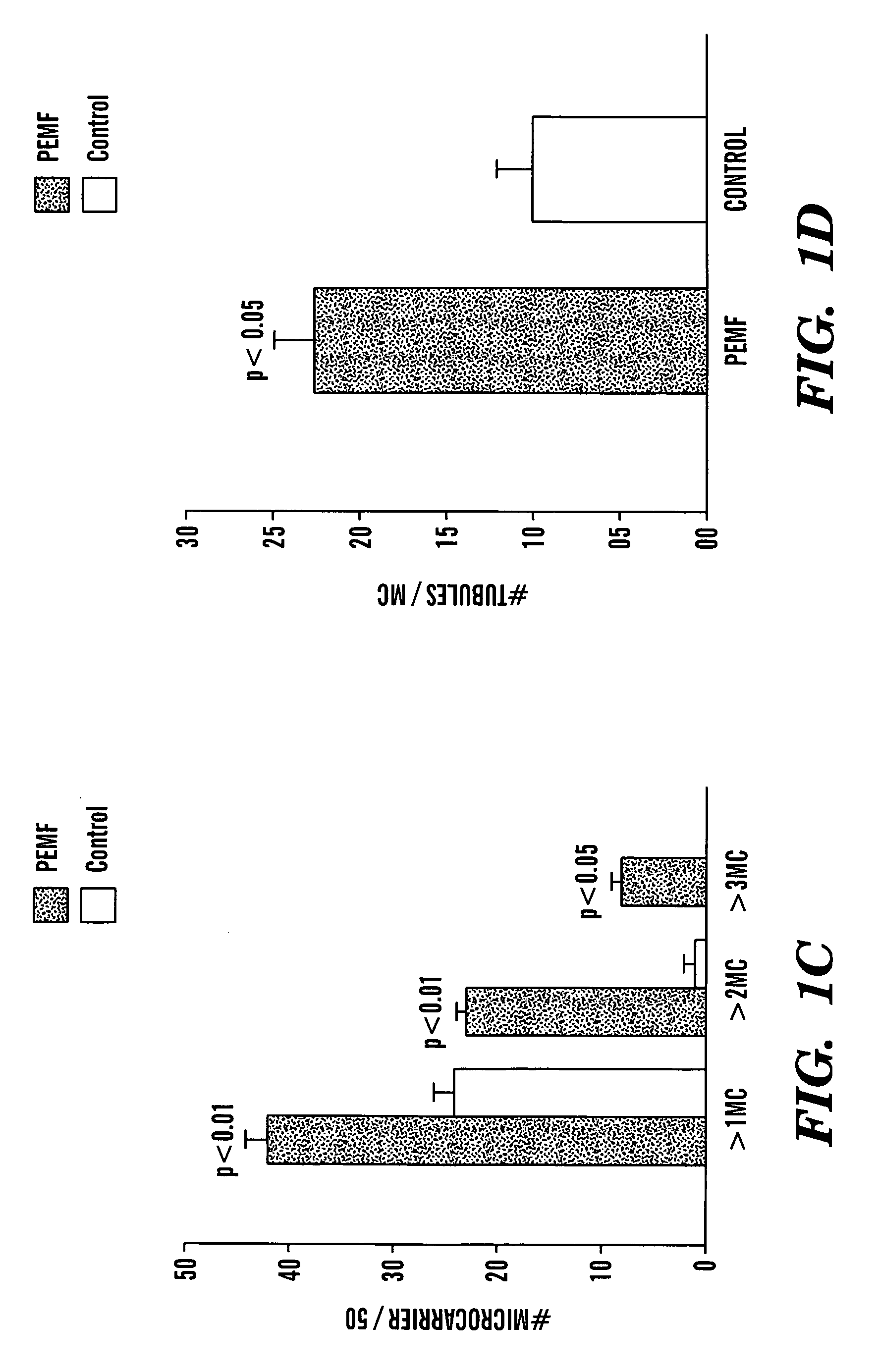Electromagnetic fields increase in vitro and in vivo angiogenesis through endothelial release of FGF-2
a technology of endothelial release and angiogenesis, which is applied in magnetotherapy, magnetotherapy using coils/electromagnets, magnetotherapy, etc., can solve the problem that it is unlikely that pemf will achieve clinical success
- Summary
- Abstract
- Description
- Claims
- Application Information
AI Technical Summary
Benefits of technology
Problems solved by technology
Method used
Image
Examples
example 1
Cell Culture
[0029] HUVECs (Clonetics, San Diego, Calif.) were cultured in endothelial basal medium (EBM-2) supplemented with EGM-2MV and studied at passages 4-7. Fibroblasts were harvested from newborn foreskin specimens (Freshney, in Culture of Animal Cells: A Manual ofBasic Technique, pgs. 149-175. Wiley-Liss, Inc., New York, 2000, which is hereby incorporated by reference in its entirety). Osteoblasts were harvested from fetal rat calvaria (Steinbrech et al., “VEGF Expression in an Osteoblast-Like Cell Line is Regulated by a Hypoxia Response Mechanism,”Am. J Physiol. Cell. Physiol. 278:C853-60 (2000), which is hereby incorporated by reference in its entirety). Both fibroblasts and osteoblasts were cultured in DMEM supplemented with 10% FBS and 100 μg / ml penicillin G, 50 μg / ml streptomycin and 0.25 μg / ml amphotericin B.
example 2
Exposure to PEMF
[0030] Pulsed electromagnetic fields were generated by a bone healing device (EBI, Parsippany, N.J.) delivering uniform time-varying fields. Fields consisted of asymmetric 4.5 msec pulses repeated at 15 Hz, with a magnetic flux density rising from 0 to 12 gauss in 200 μsec and returning to 0 G in 25 μsec. PEMF generators were placed inside identical incubators, but only turned on in the test incubator. Extraneous 50 Hz magnetic fields within each incubator were less than 2 mG. Custom designed cages surrounded with the same configuration were employed for the in vivo experiments.
example 3
[0031] A microcarrier (“MC”) in vitro angiogenesis assay was performed as previously described (Nehls et al., “A Novel, Microcarrier-Based In Vitro Assay for Rapid and Reliable Quantification of Three-Dimensional Cell Migration and Angiogenesis,”Microvasc. Res. 50:311-322 (1995), which is hereby incorporated by reference in its entirety). HUVECs were added to a suspension of MCs (Cytodex 3®), and cultured until confluent. Fibrin gels were prepared by dissolving fibrinogen (Sigma, St. Louis, Mo.) in PBS (2.5 mg / ml) along with 200 U / ml of aprotinin to prevent excessive fibrinolysis. Confluent HUVEC-seeded MCs were added to each well and polymerization was achieved at 1 hour by adding thrombin (0.625 U / ml). Gels were cultured in the presence or absence of PEMF for 7-10 days. The degree of angiogenesis was quantified by two blinded observers assessing 50 MCs at random and counting: (1) the number of MCs with tubules greater than one, two, or three MC diameter...
PUM
 Login to View More
Login to View More Abstract
Description
Claims
Application Information
 Login to View More
Login to View More - R&D
- Intellectual Property
- Life Sciences
- Materials
- Tech Scout
- Unparalleled Data Quality
- Higher Quality Content
- 60% Fewer Hallucinations
Browse by: Latest US Patents, China's latest patents, Technical Efficacy Thesaurus, Application Domain, Technology Topic, Popular Technical Reports.
© 2025 PatSnap. All rights reserved.Legal|Privacy policy|Modern Slavery Act Transparency Statement|Sitemap|About US| Contact US: help@patsnap.com



